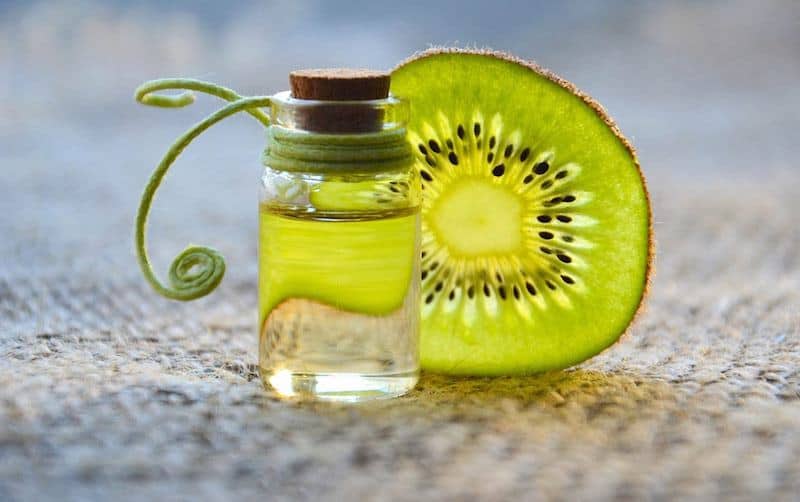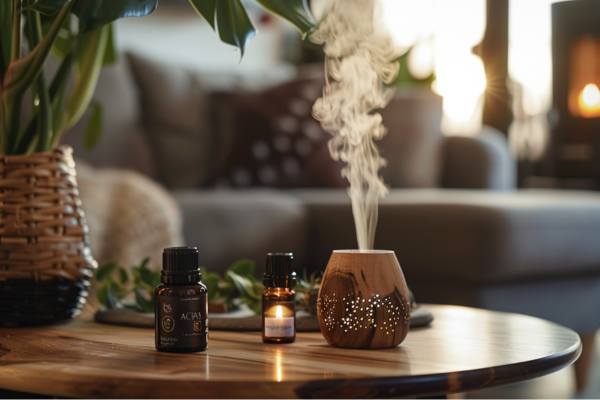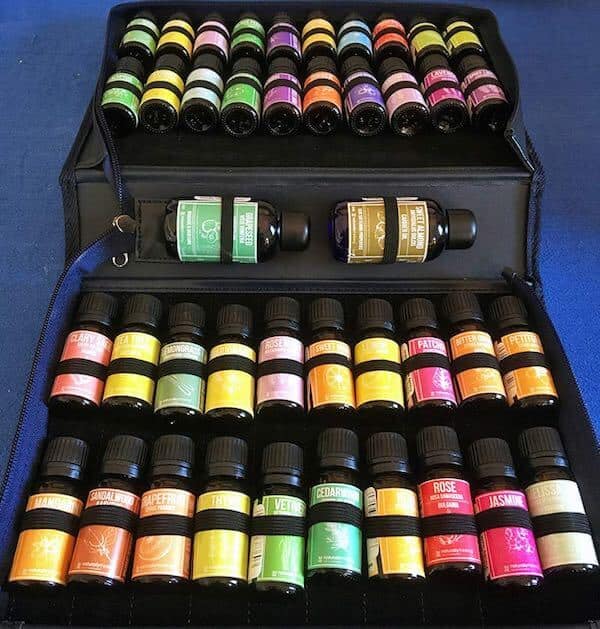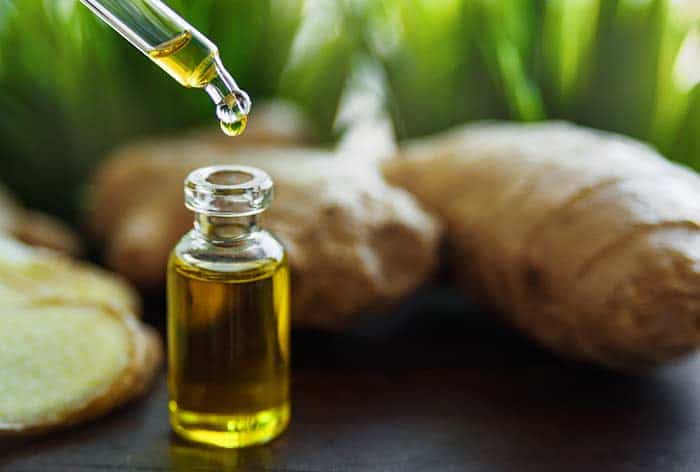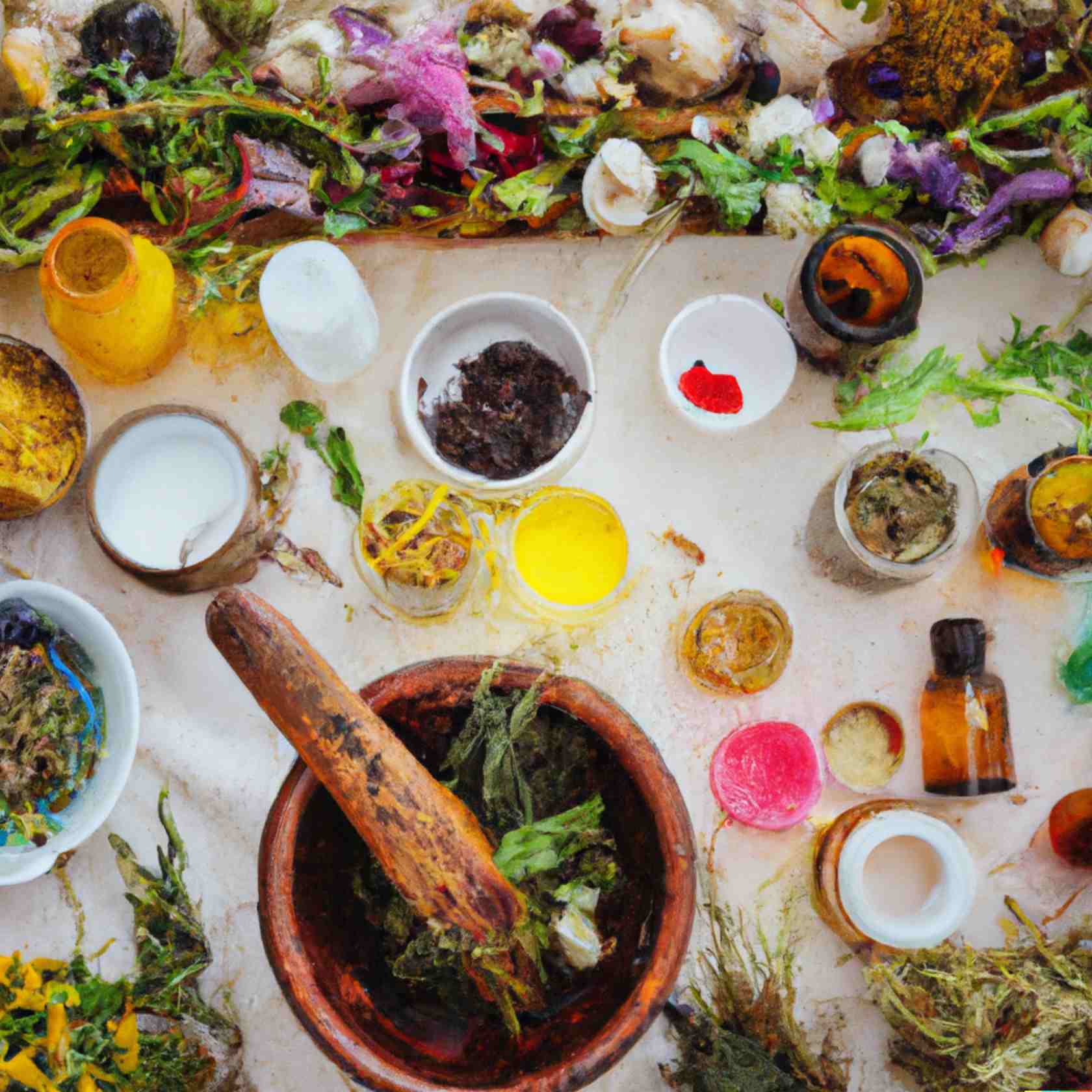Essential Oils Guide for Beginners: Go From Confused to Pro!
The time has come where I need to learn about essential oils. If I am to make my own recipes I’ll have to learn what each aromatic essential oil is for and how the blends can benefit me. Daunting? Hell yes. But with patience and time I’ll get passed the basics and enjoy the products I make.As I learn I’m putting together the essential oils guide for beginners I would have liked to have found myself. Everything I learn will be added here for yours as well as my benefit. Enjoy! ~ Patri Hernandez
I am VERY EXCITED to put this post together. I’ve bought a book which covers all the essentials and as I read I am also doing research online which I’ll then compress into this blog post.
I’ll be adding here what I learn as I go along from my readings and research in general. As a beginner myself (and I assume you are a beginner from having clicked on the title) I’ll try to cover the topic in a way that’s simple and makes practical sense. The stumbling blocks, doubts, concerns, etc you’re facing are probably the same I’m facing as I go along in my research, so hopefully I’ll be able to answer most of your questions in this post.
I’ll try to be brief and concise and just stick to what I think is needed to know at least to get started with full knowledge/understanding without getting lost in the jargon or unnecessary details.
I am not a trained aromatherapist so please seek medical advice if you have chronic or serious health concerns or consult a professional aromatherapist.
Ok, with that out of the way, let’s get comfortable and let’s get started.
Essential Oils: the Natural Healers Everyone Raves About
Essential oils have been around for thousands of years so it is about time I learn the ins and outs and how potent these oils can really be.
They are meant to enhance both your health and wellbeing; there’s no doubt that different smells make me feel different things, so if you add the essence of the plant itself to a particular smell the potency must be there.
I suppose that’s what the meaning of ‘aromatherapy’ is: getting well with the different scents and how they penetrate your being.
The General Trend in Holistic Healing
I have experienced the growth of the ‘holistic healing’ trend: more and more people are sick and tired of feeling dull at best and depressed at worst; tablets haven’t really done much more than quick fixes and suppressing symptoms and individuals, at least in the west, are not really getting ‘cured’ from the insanity of the pressure of culture and society.
Stress, anxiety, depression, insomnia… all habitual states most individuals would be familiar with; at least at some stage in their lives. No wonder people are more and more interested in natural remedies which have proved to be extremely popular by the number of websites trending in regards to this topic. Just search for essential oils and you’ll see the vast amount of websites dedicated to them.
This resurgence is convenient for me: as I grow older I’m more and more interested in a natural way to treat both the body and the mind. I already practise a spiritual lifestyle which keeps me happy, sane and above the dangers of stress/depression/insomnia/etc, so extending my knowledge to learning about essential oils and their benefits and uses is simply ideal.
Basic Essential Oil Uses
Much has been said about this but I will bullet point essential oils’ basic uses below (more on this further down this post):
- Remedies
- Cosmetics
- Fragrances
- Diffusing aromas
- Scented candles
I visited Neal’s Yard a few days ago and had a long chat with the girl behind the counter regarding aromatic essential oils in general, uses, integrating them in my own cosmetic formulas, etc and my suspicions were confirmed in terms of this being an art form that you get good at with lots of practice (meaning it’s not a 2 plus 2 formula, but rather an art that needs to be mastered).
This excited me because I like the idea of coming up with my own very unique and personal blends as well as learning how to ‘curve’ the art to my advantage. I suppose it would be similar to playing the piano: it’s all about the mastery of sentiment, delivery and technique.
With aromatic essential oils I suppose you ‘play with the notes’ within the aromas til you blend to perfection. Yes; I like the idea of that!
Essential Oil Beginner’s Starter Kit: Your Journey Into Natural Wellness
What’s this Whole Thing About Dilution?
Ok, so it looks like these oils are very much concentrated and too strong to be used on their own. They have to be ‘diluted’ with another oil, which is called the ‘carrier oil’ (list of carrier oils here), taking its name from what it does (it ‘carries’ the essential oil to its destination). I hope this makes sense.
A ‘base oil’ or ‘carrier oil’ is needed in order for the essential oil to be diluted and ‘carried over’ to its destination.
Now that we have introduced the oils, let’s start talking a bit more about what essential oils are, what they do, how they are extracted, what’s inside an oil, etc.
Here’s a GREAT article on how to dilute your oils.
If the chart is too complicated, here’s a GREAT video on how to dilute your essential oils.
Seasonal Essential Oil Blends: Nature’s Rhythm in a Bottle
Winter Wellness Blend Perfect for diffusing during cold months
- 4 drops Eucalyptus
- 3 drops Pine
- 2 drops Peppermint Benefits: Supports respiratory health, boosts immunity, creates a cozy atmosphere
Spring Allergy Relief Diffuse during high pollen days
- 3 drops Lavender
- 3 drops Lemon
- 2 drops Peppermint Benefits: Helps clear airways, soothes irritation, reduces seasonal discomfort
Summer Cooling Blend Refreshing during hot days
- 3 drops Spearmint
- 2 drops Lavender
- 2 drops Lime Benefits: Creates cooling sensation, uplifts mood, energizes
Autumn Comfort Warming blend for crisp days
- 3 drops Sweet Orange
- 2 drops Cinnamon
- 2 drops Clove Benefits: Warms the spirit, supports immunity, creates inviting atmosphere
Seasonal Transitions Use when seasons change
- 3 drops Frankincense
- 2 drops Tea Tree
- 2 drops Bergamot Benefits: Supports immune system, balances mood, eases transitions
So What EXACTLY Are the Oils, What Do they Do, What’s Inside an Oil and How they Work on You
What exactly are essential oils? How do they work? Why do they make us feel better? How can they become part of holistic healing? I’ll try to answer all these questions below.
What are These Oils Made Of Exactly?
In a nutshell, essential oils are where the plant’s ‘power’ is concentrated. So all the power and therapeutic properties of a plant will be in the oil.
Think of a perfume – it is a strong, concentrated liquidy oil that contains a potent, powerful smell. Essential oils are contain the potency of the plant which includes aroma and all the healing properties. This is plant power!
Essential oils contain the powerful essences of the plant themselves.
Each oil will contain:
- The plant’s aroma in a highly concentrated form
- The plant’s healing properties in a highly concentrated form
What Do Essential Oils Do?
So we know that they are the concentrated ‘extract’ or ‘essence’ of the plant. But what does this mean for a person? How can they benefit from this?
Every oil is different and has unique properties.
- They’re therapeutic for the mind (they can treat anxiety, stress, depression, etc)
- They’re therapeutic for the body (ease pain, antiseptic, decongesting, etc)
- They have potent aroma (can be used for diffusers, cosmetics, etc)
Here’s an Dr. Axe article on 101 essential oil uses.
Where are the Oils Extracted From?
All plants contain essential oils but not all essential oils are extracted from the same parts of the plant.
- From seeds, resin or peel
- From roots, bark, leaves or petals
Here’s an interesting article on the different types of extraction, distillation being the most common way of extracting the oils nowadays.
What’s Inside an Oil?
Inside the oil we have chemical components, as many as 100 of them. These components work together in a very powerful way: if you single out one component you’re not getting the full therapeutic power.
So, the potent combo of all these components is what gives EACH oil its unique aroma and therapeutic powerful value.
Each of the chemical components will be determent on the way they act on both the body and the mind.
Let’s have a look at the components inside the oils.
Components in oils:
- Major components
- Minor components
- Trace components
Each component will split into:
- Oxygenated compounds
- Terpenes
I didn’t go into each in depth because I didn’t think it necessary for this basic understanding of essential oils but at least you know about the components, how powerful they are and what’s in them at a glance.
How Essential Oils Work on the Spirit, Body & Mind
Can a smell heal?
Traumas can get healed when identified and seen for what they are.
If a smell can trigger the mind then it is possible that this response places our mental state on a different level.
A Holistic Approach
Since essential oils work on the 3 aspects of spirit, body and mind, they can be used to treat the person as a ‘whole’ or holistically, rather than just looking at one area while dismissing the others.
Essential Oils for the Mind
We can use essential oils to stimulate the mind.
- Enhance a sense of wellbeing
- For relaxing purposes
- Balancing energy
Essential Oils for the Spirit
For thousands of years essential oils have helped support spiritual practices. Here’s some of them:
- Used in religious ceremonies (frankincense)
- Used for meditation
- Clear blockages in the chakras
Essential Oils for the Body
As oils are natural healers they can be used to heal the body.
- Anti-inflammatory properties
- Anti-fungal properties
- Antiseptic properties
- Anti-microbial properties
- Boost immunity
- Balance hormones
- Relieve pain
- Natural cleansers
The Art of Blending Essential Oils
We can see how important then is to blend oils to enhance desired effects. I am very much interested in learning how to blend oils in a way that benefits my spirit, mind and body and I am inclined to think that every individual should have basic knowledge of this in order to create customised blends at home. At least to treat basic ails so we don’t have to depend on other types of medicines which we might take without even knowing what’s in the tablets.
Understanding what ails are and what combats them is important. And knowing how to treat some of them at home with the use of natural remedies and what each one is for is an effective way to take responsibility for what we put into our bodies.
We should all learn at least the basics when it comes to natural remedies and essential oil blending to heal ourselves.
Knowing what each oil is for and how the blends work is important so we can customise each blend for our individual needs.
Understanding that the spirit, body and mind work together or ‘holistically’ is key. We shouldn’t look at them separately.
How to Choose Your Pure Essential Oils
I’ve noticed it is quite easy to buy essential oils in many places. But, am I getting the right thing – a good quality, natural and pure essential oil?
Look out for:
- Make sure it is a natural oil with all the components, and not an isolated component, as the therapeutic effects won’t be the same!
- Purchase oils from recognised companies, to make sure you’re getting good quality products.
- Look for the botanical name of the plant on the label. Other information like country of origin might appear.
- Look for organic essential oils as they would not have potential toxicity from fertilisers or pesticides.
- Be cautious if you see an oil that seems too cheap. Essential oils are not the cheapest items for a reason.
An isolated component won’t have the therapeutic values and effect of the combination of ALL components within an oil.
Popular Methods of Applying Essential Oils
Here are the most popular ways in which essential oils can be used:
- Oil-infused massages
- Aromatherapy baths (deeply relaxing)
- Sitz or shallow baths (to treat conditions)
- Compressing against the skin (to relieve pains and sooth)
- Diffusing the smell into the air
- Showers and saunas
- Mouthwashes
- Cosmetics skincare (creams, ointments, balms)
- Cosmetics haircare
- Inhaling the scent (steam inhalation, tissue inhalation)
- Applying balms on pulse points
- For personal use as scent (instead of perfumes)
An isolated component won’t have the therapeutic values and effect of the combination of ALL components within an oil.
Getting Started with Essential Oils: Practical Tips for Beginners (RECAP and Summary)
1. Choose Your Carrier Oil
- Almond oil: Great for all skin types, especially dry skin. It’s light and easy to absorb.
- Jojoba oil: Excellent for oily and acne-prone skin because it mimics the skin’s natural sebum.
- Coconut oil: Ideal for hydration but can be comedogenic (clogs pores) for some people.
Tip: Start with small amounts when you’re experimenting. A tablespoon of carrier oil mixed with 2-3 drops of essential oil is a good starting point.
2. Dilution Guidelines
- For face: Use a 1% dilution (1 drop of essential oil per teaspoon of carrier oil).
- For body: A 2% dilution (2 drops per teaspoon of carrier oil) is common.
- For baths: Mix essential oils with a tablespoon of carrier oil before adding to your bath to prevent skin irritation.
3. Diffusing Essential Oils
- Add 3-6 drops of essential oil to a diffuser for a room-sized space.
- Tip: To enhance sleep, try lavender or cedarwood in your bedroom diffuser. For a mood boost, use sweet orange or peppermint.
4. Making a Simple Roller Blend
- Use a 10ml roller bottle:
- Fill it with your carrier oil of choice.
- Add 5-10 drops of essential oil (2-3 drops for sensitive skin).
- Roll the bottle between your palms to mix the oils.
- Apply to pulse points like wrists and behind your ears.
5. Essential Oils for Specific Concerns
- Stress: Lavender, chamomile, and clary sage.
- Digestion: Peppermint, ginger, and fennel (dilute and rub on abdomen).
- Sleep: Lavender, vetiver, and marjoram.
- Energy boost: Peppermint, eucalyptus, and lemon.
- Muscle pain: Peppermint, rosemary, and black pepper (diluted as a massage oil).
6. Essential Oil Storage Tips
- Store oils in dark glass bottles to protect them from sunlight.
- Keep them in a cool, dry place, away from heat sources.
- Essential oils can oxidise over time, so use them within 1-2 years, except citrus oils, which should be used within 6-12 months.
7. DIY Essential Oil Recipes
- Calming Bath Oil:
- 1 tablespoon of carrier oil (e.g., almond or jojoba).
- 3 drops of lavender essential oil.
- 2 drops of frankincense essential oil.
- Mix and add to your bath for a relaxing soak.
- Room Spray:
- 1 cup of distilled water.
- 1 teaspoon of witch hazel (helps oils mix with water).
- 10-15 drops of your favourite essential oils (e.g., peppermint for energy, lavender for calm).
- Shake before each use and spritz around the room.
8. Essential Oil Safety Tips
- Patch test: Before using any oil on your skin, apply a small amount of diluted oil to a patch of skin to check for any reaction.
- Photosensitivity: Citrus oils (like lemon, lime, and bergamot) can make your skin sensitive to sunlight. Avoid using these oils on your skin if you’re going out in the sun.
- Pets: Be cautious with essential oils around pets. Oils like tea tree and eucalyptus can be harmful to cats and dogs if inhaled or ingested.
9. Blending Oils for Custom Skincare
- For dry skin: Combine 3 drops of frankincense, 2 drops of rose, and 1 drop of geranium with a tablespoon of carrier oil.
- For oily skin: Try 3 drops of tea tree, 2 drops of lavender, and 1 drop of patchouli in your blend.
- For mature skin: Mix 3 drops of rosehip, 2 drops of frankincense, and 2 drops of carrot seed with your carrier oil to enhance elasticity and promote a youthful glow.
Final Thoughts…
Aromatherapy is a ‘growing trend’ and essential oils are the key.
More and more people are turning to natural health, homemade remedies and general holistic approaches to wellbeing.
I couldn’t live with my wonderful aromatherapy kit. I live with, by and for oils.
They mean EVERYTHING to me.
I hope you get to enjoy them too!
I mean, look at the vast amount of websites around dedicated to natural living – ordinary people from all over the world blogging about this topic adding their knowledge, research, expertise, experience, recipes… you name it. People who don’t want to rely so much on chemistry and pills/tablets doctors have been prescribing for years. We are caring about what we put into our bodies!
Speaking for myself, I have definitely developed a huge interest and love for the topic. Even though I’m new to essential oils and skincare in general (when I was younger I didn’t really dive into the world of beauty) just recently I have developed a ‘hunger’ for creating my own cosmetics, applying makeup and learning as much as I can around natural remedies and general wellbeing.
Am I after looking younger or ‘prettier’? Hell no. My hunger comes from a ‘feeling good’ and being genuinely happy. For me it’s all about pampering myself due to self-love (developed through spiritual practices). It’s all about me, and nothing about the other.
I hope this blog post has helped essential oil ‘beginners’ like me, I suppose the idea is to spread the love for the Self and see how can we really make the most of what nature has provided in a way in which we learn and have fun at the same time.
It’s not about being liked, but about Loving Oneself.
Other Links of Interest
Here’s are a few extra links I found to be of interest:
- List of countries in terms of essential oils origin (a very basic guide) – here
- Essential oils most commonly purchased by aromatherapists – here
- The trend on aromatherapy and essential oils keeps growing – here

